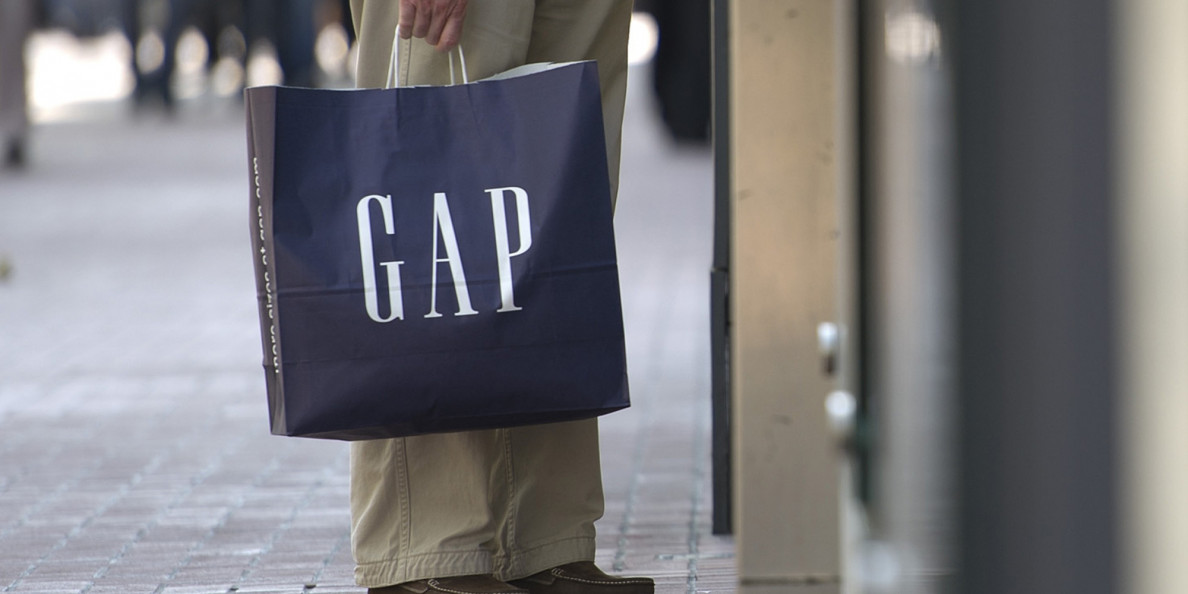In December 2020, the retail group joined the US Cotton Trust Protocol, which helps companies to source sustainable cotton by tracking it throughout the supply chain. It has also signed up to Textile Exchange’s 2025 Sustainable Cotton Challenge, which calls for more than 50% of the world’s cotton to be converted to more sustainable growing methods.

Alice Hartley, Gap Inc
The pledge has been made across all of Gap Inc's fascias, including Gap, Old Navy, Banana Republic and Athleta.
Just over half (57%) of cotton used by Gap Inc has been sourced sustainably since 2016.
The business's director of product sustainability, Alice Hartley, tells Drapers how the group is aiming to source 100% of its cotton from more sustainable sources by 2025.
Why is sustainability important to Gap?
Since our founding in 1969, Gap Inc has aspired to “do more than sell clothes”. We have deeply held values and a commitment to using our scale to be a force for good in the world. We look at sustainability through a wide lens that includes people and the environment, and look for ways to have a positive impact on the communities where we do business.
Gap Inc has committed to sourcing 100% of its cotton from more sustainable sources by 2025 – how is it tackling this challenge?
We have defined “more sustainable sources” to include organic, recycled, and cotton from the Better Cotton Initiative (BCI) and US Cotton Trust Protocol. We are making good progress toward our goal: 57% of our cotton volume comes through these programmes.
You align with the Textile Exchange’s 2025 Sustainable Cotton Challenge. Why?
The sustainable cotton programmes we support were also recognised by the 2025 Sustainable Cotton Challenge, so it made sense to sign on to this initiative. Sustainability is a pre-competitive realm in which we can make progress faster by working together, so we look for opportunities to join forces with like-minded brands that want to lead change across our industry.
Why did you focus on cotton?
Across Gap Inc, cotton is our number one fibre – representing more than 60% of our total fibre volume. So it’s critical for us to be a leader in sustainable cotton – for example, by signing on to the new US Cotton Trust Protocol, which will year-on-year field data under which we will commit standards on areas including water use, greenhouse gas emissions and soil health. Our sustainable cotton goal also supports our climate and water strategies, as materials are a significant contributor to supply chain impacts.
How are you bringing this cotton into your ranges?
Our participation in sustainable cotton sourcing is through a mix of approaches led by our brands and by Gap Inc’s Global Sustainability team. With certified recycled and organic cotton, our brands’ design teams play a lead role in selecting fabrics with these fibres and marketing the benefits to customers. With BCI and the US Cotton Trust Protocol, because they are mass balance based [calculation-based] programmes, Gap Inc takes the lead on supporting these programmes on behalf of all our brands.
What about recycled and other sustainable materials?
To accelerate the adoption of more sustainable materials, we created the Gap Inc Preferred Fiber Toolkit (PFT) [in September 2020] to evaluate the environmental and social impacts of various fibres. This list includes recycled cotton, polyester and wool, along with preferred options for a range of natural and synthetic fibres. Recently we announced that we are gifting this tool to Textile Exchange [a global non-profit organisation that collects and publishes industry data], which will relaunching it as the Preferred Fiber and Materials Matrix this year. Our hope is that by sharing this resource with the industry, we can help other brands to more quickly adopt preferred fibres.
What about other animal-derived products?
Our preferred fibres list includes preferred alternatives to conventional wool – the largest by volume of our animal-derived fibres. Some of our brands have also started using Responsible Down Standard certified down and feathers. Our animal welfare policy prohibits the use of real fur, and outlines our expectations regarding ethical and humane treatment of animals.
What have been some of the biggest challenges in shifting the focus in product?
When using new materials or manufacturing techniques, there’s a learning curve that often comes with challenges related to balancing cost, quality and impact. We want to identify the product-related solutions that are scalable and make meaningful impact.
What has the response been from customers to these more sustainable product initiatives?
Where our brands have tied customer messaging and storytelling to sustainability, we have seen a strong response from customers. Examples include Banana Republic’s marketing of organic cotton and Dry Indigo denim, and the Gap Teen collection.
How are you communicating these sustainable initiatives in product, in store and online? How are you dealing with greenwashing and communicating the actual impact you are having?
We are very aware of the risks of greenwashing, and work hard to ensure that claims made to customers are credible and trustworthy. Our brands – Gap, Banana Republic, Athleta, Old Navy – have each approached sustainability through their own lens in communicating to customers. Sustainability is a journey, so our goal is to make meaningful progress, even when we know we can’t be perfect.


